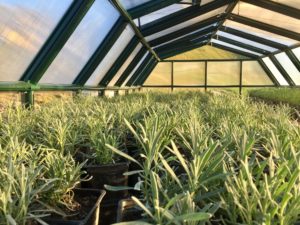Appalachia is a complex, often misunderstood section of our country’s history. With a legacy of extraction starting with land grants during colonization to salt mining in the 1800s to the timber and coal mining of the 20th century, Appalachia has served as a pawn of social and economic forces that regularly took more than they gave. The people of Appalachia are either commonly vilified as ignorant or victimized as addicts. The myths and dichotomies that characterize the region from afar may be very thing that continues to hold back its progress.
It was the quest for truth that called TFN’s PLACES Fellowship 2017 Cohort to hold its third site visit in Charleston, West Virginia. This is the first time a PLACES cohort has visited the Appalachian region. We came ready to test those myths and were able to experience the full range of work happening to build a strong West Virginia. We sat with social workers helping addicts in Beckley overcome the opioid epidemic, which has been fueled by harmful public policy and the pharmaceutical industry’s practices. We also learned about social justice activism led by Appalachian Voices, Call to Action for Racial Equality, and the STAY Project that are casting a vision for a just, inclusive region especially as the mono-economy of mining contains decline. It was the lavender farm on the reclaimed Four Mile Mountain mine that stole the cohort’s breath as we saw the true innovation and ingenuity of West Virginians. “The talent for our future is right here,” said Kendall Bilbrey of Appalachian Community Fund and that couldn’t have been a truer representation of our experience over those three days.

Now more so than in previous times, Appalachians and West Virginians are ready to reclaim the quality of life found in the mountain ways of their history, but the challenges are steep. Coal mining has been the force fueling the livelihood of many towns for more than hundred years and now has significantly declined in the last decade due to cheaper natural gas. The national mining companies rarely leave a lasting resource for those left to deal with the economic, social, and environmental “hopelessness,” as described to us, that ensues after they are gone. Even as the sentiment of hopelessness is squarely felt by many, West Virginians also spoke of great hope for their families and the strength of their community. They know what’s needed and are ready to act. Local leaders are seeking to bring forward the talents and skills to bear on the problems facing the region.
The South, including Appalachia, received just 10% of the national per capita average of grantmaking according to the National Committee for Responsive Philanthropy. That brilliant and leaderful talent that Kendall spoke of is often what is misunderstood and overlooked. Myths of waning capacity and little room for progress have plagued the region’s chances of attracting national philanthropic resources. The PLACES cohort of funders were able to tap into the strongest assets of beauty and resiliency. This site visit challenged us to address our own bias and reshape how we define leadership and impact in our work. I left wondering if there are any opportunities I am missing because my own definitions of leadership and impact are getting in the way? What shots weren’t taken because I wasn’t ready to let go of my own bias?
It is clear that funders have a role in bringing back a thriving Appalachia that can once again serve as a gateway to our country’s future. It won’t be easy and the culture of the philanthropic sector may need to change. For me and our work at the Solutions Project, it started with seeing rural issues as core to our strategy and not dismissing their importance because of our misconceptions of white poverty. Second, we have an opportunity to recognize diverse and creative forms of leadership that are unique to the region. Learning about the emerging solar projects, success with community policing, and passing of gender inclusive ordinances was exciting and a clear indication of their ability to win. Lastly, the Appalachian region has the potential to bring together business and community to build a sustainable economy that places a distinct value on human labor. Its painful and extractive history given the region a clarity about what is needed today to justly transition to a new economy.
In the course of three days we experienced a collection of hope and hopelessness, clear visions and complex systems, and really strong, resilient people ready to determine the future of Appalachia. The region still sits in a wake of despair after centuries of extraction, but that doesn’t seem to shake the people – their values, culture, and connection to the mountains. Appalachia needs partnership to address issues facing the region and funders have an opportunity to consider how they can play a role in seeding the future. Let’s put the despair and extraction in the past, to look towards a generative and leaderful future in Appalachia.
Catch up on our last Going PLACES blog here.
About the Author:
 Tyler Nickerson serves as the Director of Investments and State Strategy at The Solutions Project. Previously, Nickerson served as program manager at the Dyer-Ives Foundation and founded Motu Communications, which supported philanthropic clients in strategic communications, public affairs, program design, and evaluation. You can find him on Twitter at @tylerwnickerson.
Tyler Nickerson serves as the Director of Investments and State Strategy at The Solutions Project. Previously, Nickerson served as program manager at the Dyer-Ives Foundation and founded Motu Communications, which supported philanthropic clients in strategic communications, public affairs, program design, and evaluation. You can find him on Twitter at @tylerwnickerson.
